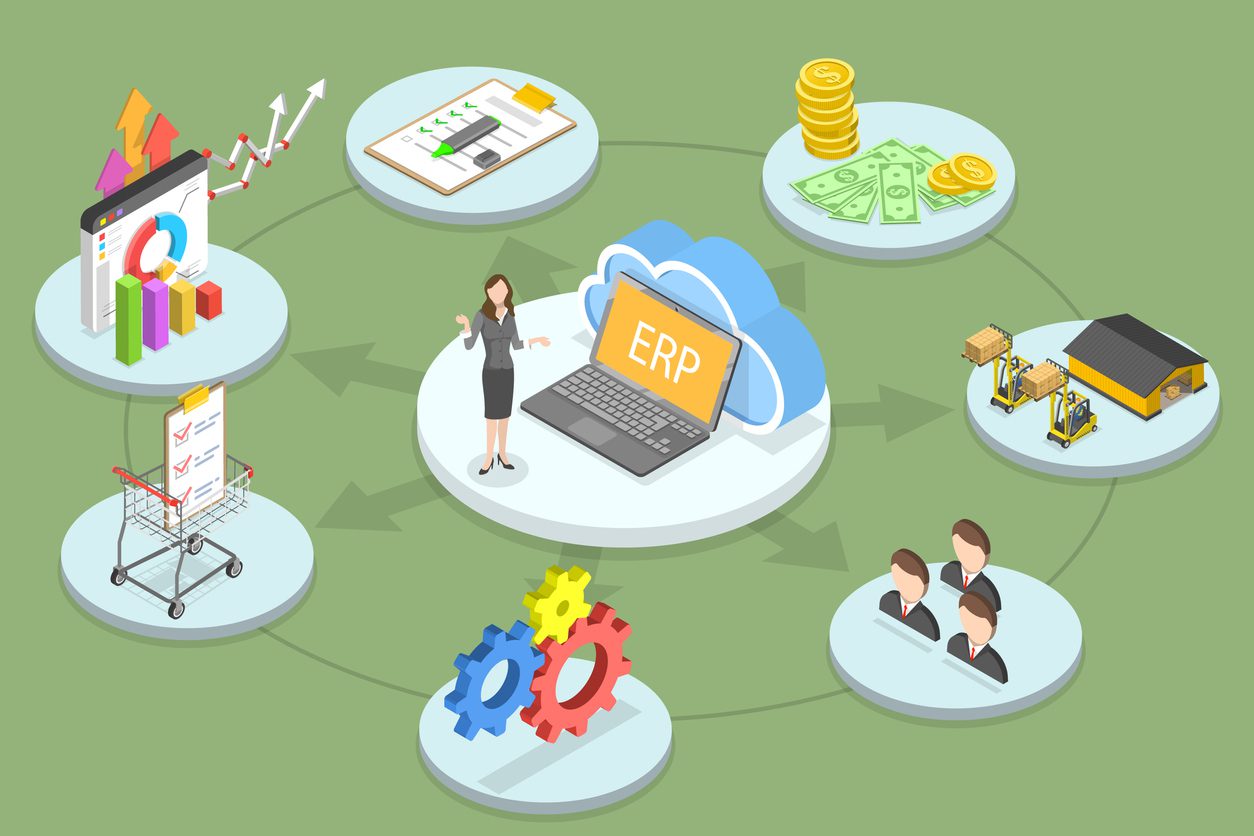 Manually handling and processing documents such as invoices is a costly affair, and the bigger your company, the more those costs add up—not just the monetary cost, but the time it takes to manually process them and the risk of manual transmission errors as well.
Manually handling and processing documents such as invoices is a costly affair, and the bigger your company, the more those costs add up—not just the monetary cost, but the time it takes to manually process them and the risk of manual transmission errors as well.
Electronic data interchange (EDI) is an electronic document standard that dramatically reduces the costs and manpower to your business associated with document processing. However, for both you and your clients, implementing EDI is a large and complicated undertaking, and if done wrong can lead to huge headaches and costly wastes of time, money, and manpower.
There are many ERP platforms to consider for providing smooth and pain-free EDI and API connectivity solutions to your business, each with their own unique features, advantages, and disadvantages.
One such platform is the cloud ERP company Acumatica. EDI integration with Acumatica is particularly useful for wholesale distributors, who buy products in bulk and resell them to other retailers and e-commerce businesses through their network of trading partners. For wholesalers, EDI is critical for maintaining standardized electronic records between them, their supply chain, and their customers.
Your unique situation will determine which of the many options for ERPs with EDI integration will work best for you. GraceBlood has partnered with Acumatica to use its powerful cloud ERP solutions and our tailored EDI integration approach to digitally link businesses.
What type of system is Acumatica?
Acumatica is a cloud ERP service provider, providing a powerful cloud-based solution that manages day-to-day business activities such as accounting, procurement, and project management. The main duty of Acumatica’s ERP platform is to help companies centralize their financial and operational systems through an easy-to-use, cloud-based system.
What does Acumatica ERP do?
Acumatica is focused on integrating its clients’ business tools and systems into one easily managed, centralized user interface. Put simply, Acumatica ERP is designed to automate the entire process of running a company—accounting, sales, manufacturing, shipping, inventory, payroll, HR—and integrate it into a single user-friendly platform that anybody in the company can make use of stay in-sync with their coworkers and other departments.
What code does Acumatica use?
Acumatica uses the Microsoft .NET Framework, a common programming language used across a wide range of platforms, with Microsoft Dynamics CRM forming the underlying software layer of their user interface. One of the strengths of the .NET framework is its high cross-platform compatibility, which here enables Acumatica’s powerful cross-platform support for the wide range of your business’s existing tech stack.
Does Acumatica have an API?
One of Acumatica’s strengths is that it is highly compatible with many of the other tools and platforms that may already be a part of your existing tech stack. Acumatica uses an API library — application programming interface — to communicate with your tools and synchronize data between them and Acumatica’s centralized UI.
What is the difference between EDI and API?
EDI and APIs are closely related. In fact, you could call APIs the EDI for the modern digital supply chain. EDI and API perform very similar roles but in different circumstances. Together, they comprise the main systems of big data that specialize in transmitting large amounts of data between partners and companies.
The EDI protocol, in use since the 1970s, allows computers to exchange documents in minutes and has become essential for running businesses smoothly and efficiently. EDI uses a peer-to-peer system to transmit and synchronize data in a standardized electronic document format.
API, on the other hand, is a web-based protocol that connects two software applications and allows them to “talk” to each other. It’s far more commonly used than EDI, which has a very specific application for document processing and transmission; every time you use an app on your phone or connect one app to another, for example, you are making use of an API.
Some businesses use EDI, while others use API, and many businesses today make use of both. In our modern world with its reliance on just-in-time supply chains, the near- instantaneous communication APIs offer has become more and more of a necessity. EDI and API are quite compatible, and recently many transaction flows between businesses and their supply chains and partners have transitioned from EDI-to-EDI to EDI-to-API or vice versa.
Picking the right ERP for EDI integration: Is Acumatica right for your business?
Choosing the right EDI provider for your client is a challenging task. EDI implementation can be a time-consuming, frustrating, and messy process, especially if a subpar ERP vendor or one simply not appropriate for your client’s unique situation holds the reins. EDI has the power to streamline your client’s business functions and enable them to grow their supply chain provider network with ease. But when implemented poorly or inappropriately, precisely the opposite happens.
An EDI integration solution must overcome a wide range of EDI obstacles, such as a lack of standardization across internal systems, a lack of holistic insight into EDI data that can lead to overlooked inefficiencies, incomplete or missing data, compatibility issues with other business applications, high costs, and security issues. Picking the right third-party provider for EDI integration is crucial for overcoming these challenges.
The costs of a sloppy EDI integration range from the obvious—a company paying for services it does not receive—to the hidden costs, such as your client missing out on new business because of a backlog of new partner onboarding. Choosing the right EDI provider is of paramount importance to successful integration.
So, is Acumatica and EDI integration for your business? To find out, let’s take a look at how GraceBlood approaches EDI integration with Acumatica.
GraceBlood’s role in Acumatica EDI integration
At GraceBlood, we offer EDI and integration solutions to help businesses everywhere streamline and expand their operations through fully customizable solutions and our unique integration framework. With Acumatica being one of the ERP systems we specialize in, we’ll bring our unique EDI methodology to facilitate a smooth and successful EDI integration project.
Our GADGET implementation methodology is designed to ensure a smooth, consistent, and reliable EDI integration with Acumatica as well as many other ERP platforms. GADGET is a streamlined EDI implementation process with six steps:
- Gather all pertinent information, specs, samples, and business information
- Analyze the situation and define the desired future state to eliminate surprises
- Develop a unique solution for your business
- Go live
- Evaluate and assess the project’s post-launch performance
- Tune your EDI implementation plan to ensure ongoing success
We use this methodology to get our clients up and running 50% faster than other providers, saving valuable time and money, through a streamlined process to cut down on headaches and frustrations.
GraceBlood is a recognized partner in the Acumatica ISV (independent software vendor) community.
Questions about Acumatica EDI? Talk to the experts at GraceBlood








